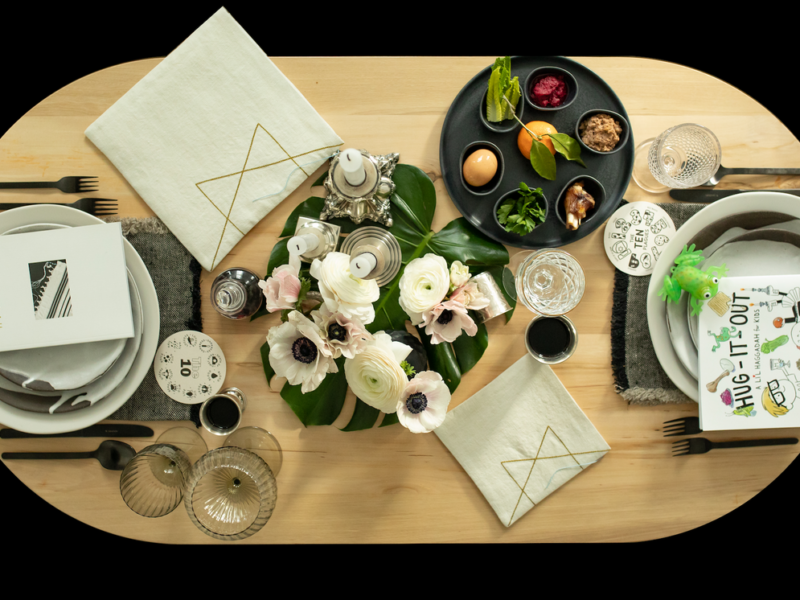It was all Chinese to me; well, with a touch of Hebrew, and that’s because I was standing in what was once a Jewish Ghetto in Shanghai, China.
Shanghai today, a modern metropolis of more than 20 million people, is significantly different than when it was a refuge city for Jewish immigrants escaping World War II. It’s a city under nonstop construction, where low buildings give way to skyscrapers. And it’s a conundrum; pricy hotels are around the corner from housing communities with no bathrooms or kitchens. Yet the energy is infectious, and while China is a communist country, capitalism flows from every direction. From Shanghai Tang to TGI Fridays, there is no escaping the myriad of places to spend money — even the markets are overflowing with pearls, jade and silk.
Through the help of the Peninsula hotel, I learned about a tour of Jewish Shanghai with Dvir Bar-Gal, an Israeli who has been living in China for years. Half the day was a tour of the Jewish areas, and the other was a view into modern Shanghai.
My group was comprised of Jewish people from around the world: Canadians, Americans, Australians, South Africans and Israelis. We found our way to Huoshan Park in the Hongkou District area, where tens of thousands of Jewish refugees lived during World War II from 1938 to 1945. The park has a small plaque written in Hebrew, Chinese and English commemorating the suffering of the European Jewish refugees. Bar-Gal started to explain the history while we sat in the park on an unusually clear and sunny day and journeyed back in time.
Bar-Gal pointed to a building across the street from where we were sitting, where the Joint once operated. The American Jewish Joint Distribution Committee — JDC or “Joint” — is a worldwide Jewish relief organization. It was established in 1914 and is active in more than 70 countries.
“There are three reasons why Shanghai saved more Jews during World War II,” Bar-Gal explains. “The first is, it was an open port city so people did not need a visa or passport to enter the city. Second, righteous non-Jews in Europe, such as Chiune Sugihara, the Japanese consul in Lithuania, wrote thousands of exit visas, as well as Chinese Consul-General Dr. Ho Feng Shan, who also issued thousands of visas for Austrian Jews between 1938 and 1940 against the orders of the Chinese ambassador in Berlin. (The Israeli government awarded the honor of ‘Righteous Among the Nations’ to Sugihara in 1985, and to Ho Feng Shan in 2001.) Finally, more Jews were saved in China because no other country around the world would let them in.” These people include former U.S. Treasury Secretary W. Michael Blumenthal, pop artist Peter Max and Haredi Rabbi Chaim Leib Shmuelevitz.
A short distance away, we walked into a small alley filled with crowded apartments, and what was once the ghetto. Small remnants of Judaism past remained, such as nails on doors where mezuzot once hung, or a design of a Jewish star in the door itself made out of metal.
Seven synagogues were built in Shanghai. We visited the Ohel Moishe Synagogue, now known as the Jewish Refugee Memorial Hall. It is a small museum dedicated to the history of the Jewish experience in Shanghai. Today, Chabad runs the only operational synagogue, Beit Menachem.
I nicknamed the city Shang-Chai, as during the 1930s when the rest of the world was shutting doors on Jews, Shanghai was one of the only cities welcoming people who were escaping the Nazis. There was already an established Jewish community, as the Sephardic Jews from Baghdad and Bombay arrived in the middle to late 1800s, notably the Kadooris, the Sassoons and Hardoons, who built many of the city’s greatest business empires.
One of the premier hotels is the Peninsula, owned by real estate magnates the Kadooris. These longtime residents of Shanghai built up the Jewish community and established important institutions such as the Shanghai Jewish Youth Association in 1937. They also established a Jewish day school, as well as set up a fund with the Sassoon family to help refugees escaping Europe set up businesses and become self-sufficient.
Modern Shanghai
The Peninsula’s rooms are opulent and luxurious, and the staff provides first-class service in every sense of the word. The subtle elegance is inviting and warm; having tea in the lobby is a real treat, not to mention the live music accentuates the magnificent food.
Until World War II, Shanghai was divided into three different sections known as concessions: Chinese, British and French. The area of old Shanghai known as the former French Concession is filled with restored colonial-era buildings, gardens and shops. It’s a relaxing place to wander and shop for souvenirs and custom-tailored clothing, or have a cup of tea in a little cafe.
A trendy, happening area in the French Concession is Xintiandi. This area is renovated and hosts Shanghai’s signature stone-gate homes, shops, bars and restaurants. Ironically, one of Xintiandi’s must-see places is the meeting house-turned-museum where the Communist Party of China was founded in 1920.
I found the area intriguing. It had a China-meets-Rodeo-Drive type of feel, but for a more authentic, old Chinese atmosphere, I spent time in Yu Garden. Established in the 16th century, it’s a classic Chinese garden, filled with ornate pagodas, flowering trees, pretty ponds and the still operational Huxinting Teahouse. Right outside the peaceful garden is the chaotic Yuyuan Bazaar, a good place for memorabilia and inexpensive street food.
Later in the day, an Israeli friend, Maor, who lives in Shanghai, joined the tour. To my amusement, I found myself speaking more Hebrew than English in China.
We headed toward the Bund, a curving riverside boulevard lined with marble and granite buildings built in the 1840s. The most beautiful structures were built in the early 1900s, with the river port on one side and the old foreign concessions on the other. Foreign magnates spared no expense and imported Italian marble, Oregon pine and British bronze works. The buildings were used as banks, private clubs and hotels.
One of the must-see buildings is the Shanghai Pudong Development Bank, once known as the former Hong Kong and Shanghai Bank. Stepping inside you are transported to Italy. It has shiny marble mosaic floors, an airy octagonal rotunda and eight allegorical wall murals from the 1920s representative of the world financial centers, such as Tokyo, New York and London.
One of Shanghai’s most prominent pedestrian streets is Nanjing Road, and it will leave you wondering if you are really in China and not Europe. It is an enormous bustling boulevard, alive with video screens flashing advertising and a mix of locals and tourists wandering and shopping. If you want to go off the beaten path, walk behind the road, where another slice of China awaits you — you’ll find small stores selling everything from mannequins to doorknobs. Motorcycles galore litter the streets and people pedal on bikes, pulling supplies from one area to the next.
Shanghai’s history is intriguing, and its present is propelling it quickly into the future. Of course, even traveling solo, I found my place and my people, but no matter, at the end of the day, it was still all Chinese to me!
Masada Siegel is the author of Window Dressing, more information on which can be found at masadasiegelauthor.com.





